Hisense 65A7GQTUK Review
An affordable big-screen telly with backlight limitations
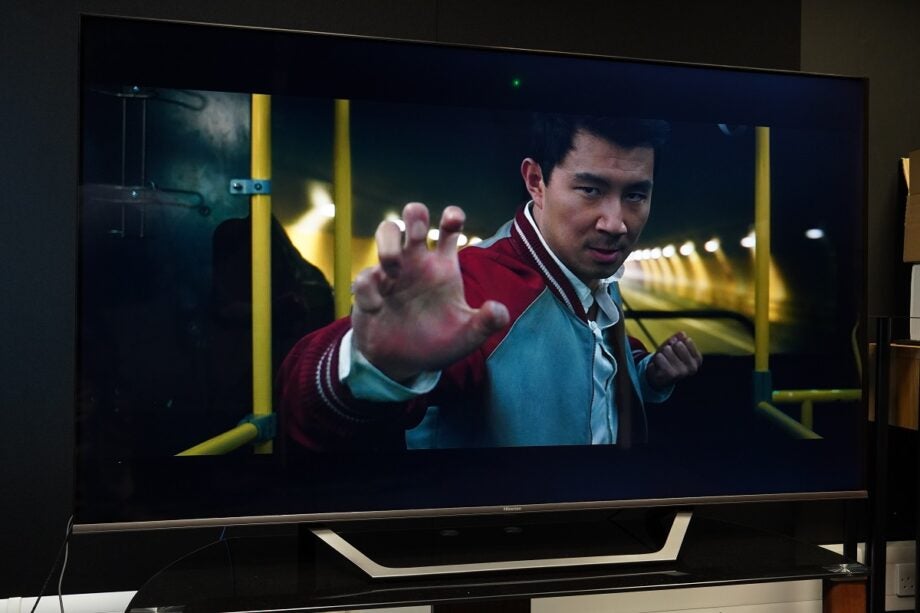
Verdict
The A7G is a solid effort from Hisense, supporting a range of gaming and movie features for those looking for a big-screen telly that doesn’t break the bank, but backlight issues hamper its overall value.
Pros
- Colourful, expressive image
- Dolby Vision
- Slick motion abilities
- Support for HDMI VRR, ALLM
Cons
- Backlight issues with HDR content
- Low peak brightness
- Awkward stand design
- Would benefit from a soundbar
Availability
- UKRRP: £899
- USAunavailable
- Canadaunavailable
- Australiaunavailable
Key Features
- High Dynamic RangeSupports HDR10, HLG, Dolby Vision and can decode HDR10+
- VIDAA U5.0Freeview Play plus SVOD apps including Netflix, Prime Video and Disney+
- GamingHDMI VRR and ALLM supported
Introduction
Hisense has been making inroads in the UK market with its affordable and feature laden TVs over the past few years, and its latest range is its most ambitious set.
The new OLED and Mini LED sets take top billing for 2021, which has led to the QLED/ULED options shuffling down the line to make space, the A7G looking to offer HDR performance at an affordable price.
As a big-screen fitting for sports and movies, it also starts at a slightly cheaper asking price than the U7QF model it replaces. But does the more affordable price suggest the A7G is a downgrade on what came before?
Design
- Awkward stand design
- Slim appearance for a 65-incher
- Better, premium design for remote
It’s a case of déjà vu with the A7G, which looks exactly like the U7Q – good in some ways, not so good in others.
Let’s start with what’s good. The bezel is discreet enough to not intrude on the TV viewing experience, and the depth of the set is just 78mm without the stand, making it appreciatively slim in appearance.
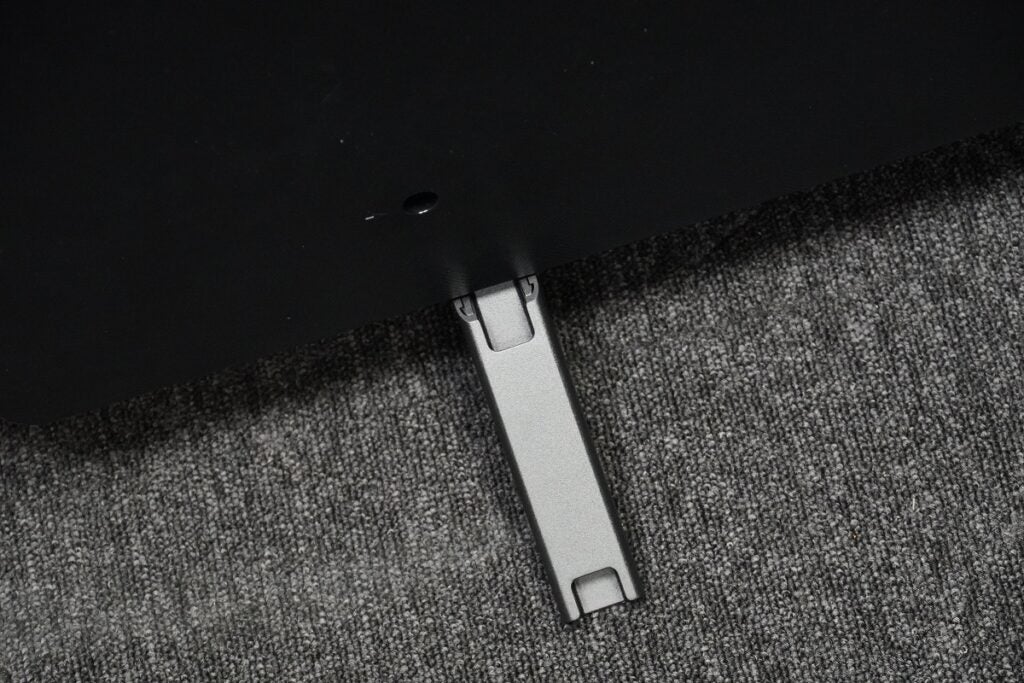
Assembly is easy and, like before, there’s a cable clutter system to route cables through the protruding ‘feet’ of the stand for a tidier area. The stand supports the TV well, just like it did on the older model, but it takes up a lot of space.
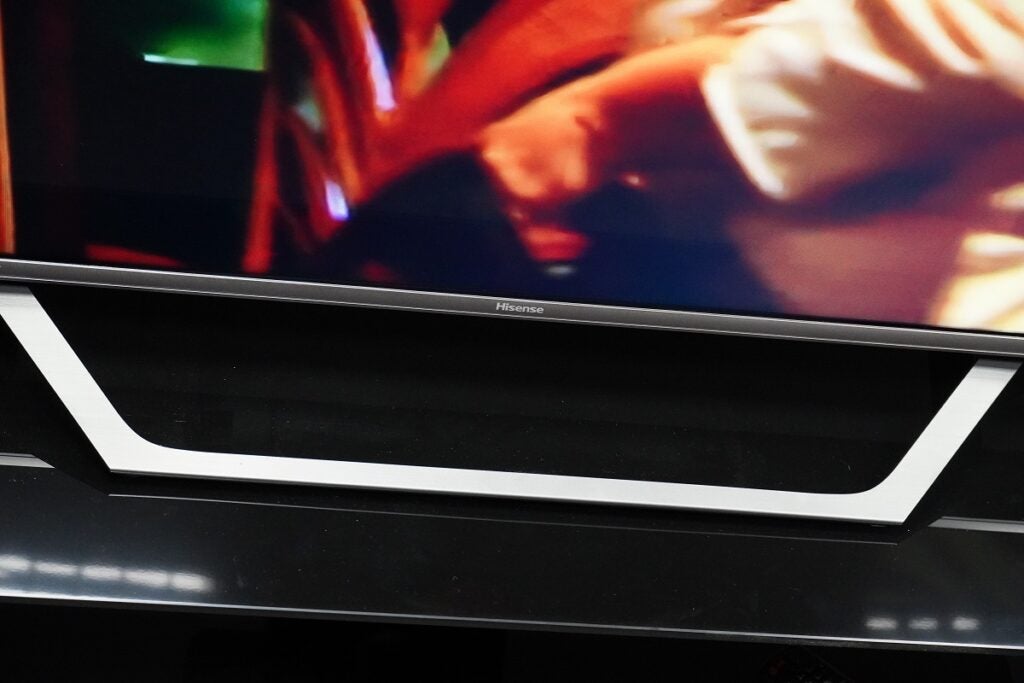
Which leads me to the one egregious aspect of the A7G’s design. The stand is just too big. If you have an area (or whatever furniture you’re using) big enough to accommodate both the A7G and a soundbar – and you will want to partner this TV with a soundbar – then it’s fine. If you don’t, the stand causes some unnecessary faffing about to make space.
The remote is a similar effort to previous and a slight improvement as it doesn’t attempt to cram as many buttons into a small space.
Features
- Supports Disney+
- Decent smart options
- Adds ALLM and VRR for PS5, Xbox Series consoles
We’re now onto VIDAA U 5.0 and if there’s a difference between this version and previous one, then I’m not seeing it. That said, despite its plain appearance, there’s no argument about navigation and operation. The VIDAA interface is easy to use and there’s something to be said about an interface that settles for that level of simplicity.
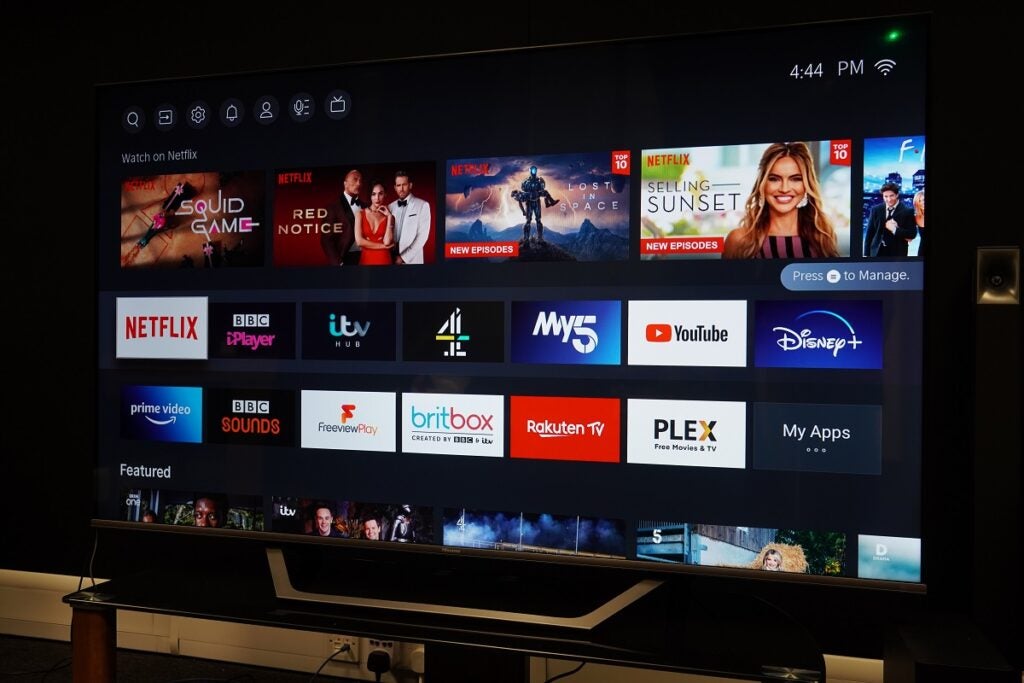
The interface is separated into several sections, but apps is where the action is. The app selection is focused rather than bountiful; Netflix has pride of place on the top row and all the UK catch-up apps are covered (as Freeview Play), with Disney+ and Britbox available also. There’s VIDAA Free, which rounds up a selection of free content from the likes of Plex, Vevo, YouTube and Facebook Watch for more options.
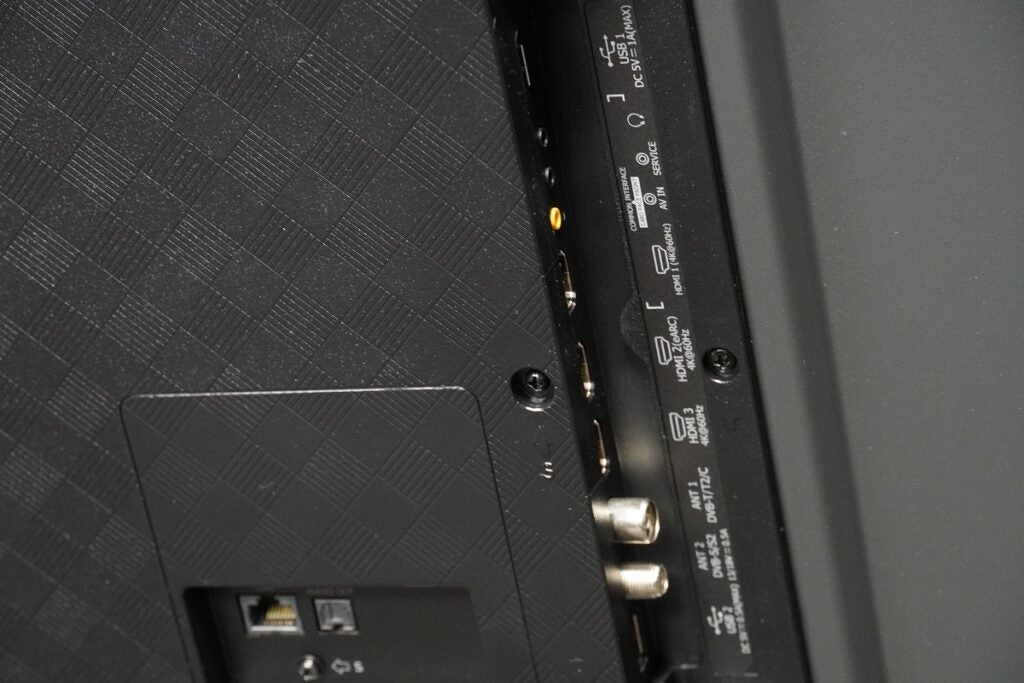
Disappointingly, there are fewer HDMI ports – three instead of four, but ALLM (Auto Low Latency Mode) and VRR (Variable Refresh Rate) are covered across all of them so you could plug a game console into any port and benefit from those features – though they are HDMI 2.0 ports, not 2.1 specified. eARC is supported on HDMI 2 for pass-through of lossless audio.
Other ports include two USB (2.0 and 3.0), digital optical out, Composite in, Headphone out, and a CI+ Slot along with satellite and aerial inputs. Wi-Fi (2.4/5GHz) and Bluetooth 5.0 are your wireless options.
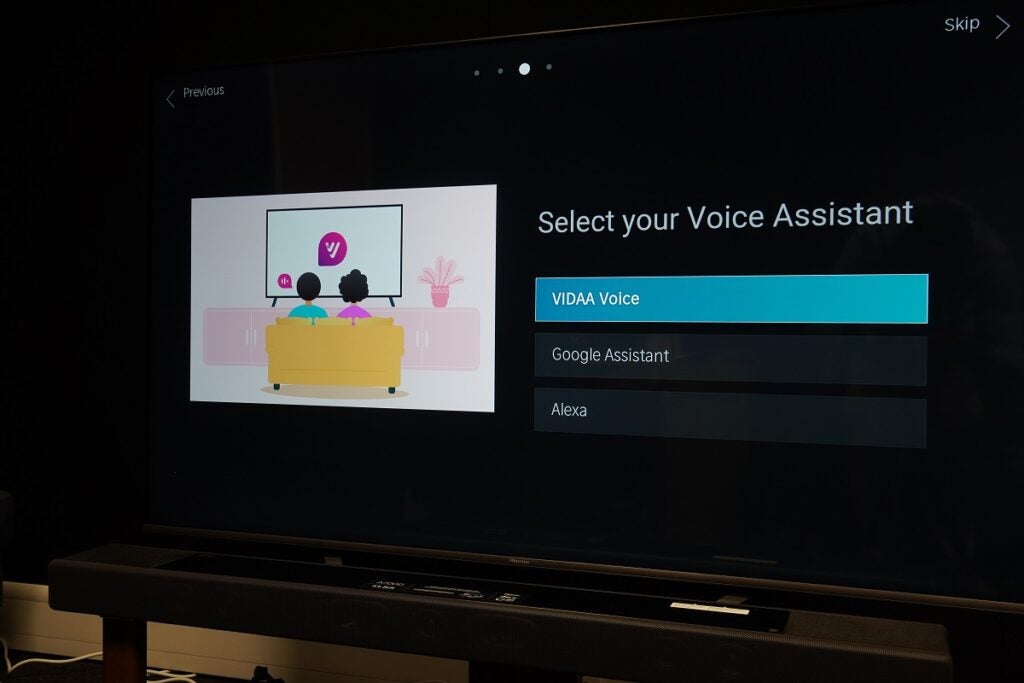
Google Assistant and Alexa are available (the latter via the Remote Now app) alongside the option of VIDAA Voice, which appears to be the OS’ bespoke digital assistant. Gaming response times aren’t as quick on they were on the U7QF model (10.5ms), registering 14.1ms recorded at 4K and 14.5ms at 1080p. It’s still a nippy performer.
Picture quality
- Satisfying motion handling
- Performs better in bright rooms
- Omits HDR10+
Compared to the U7QF, the A7G is a downgrade in features. Where the U7Q had Full Array local dimming the A7G makes do without. It’s not a full house for HDR formats either, with the Hisense able to decode HDR10+ but not officially certified for it.
It’s a curious situation, perhaps exacerbated by the new models in the Hisense range taking more importance. While the Hisense remains a capable performer, it falls short of in a few areas.
Brightness is predictably low with the A7G registering 343 nits in its Dynamic mode. The effect is that dark HDR10 scenes are very dim, making it difficult to perceive detail in tricky low-light scenes such as the one where Vers and Starforce infiltrate the planet of Torfa in Captain Marvel. Flick to the Dolby Vision version on Disney+ and the level of detail in the shadows and darkest parts is much improved, so you’ll want to be viewing as much Dolby Vision content to mitigate this issue.
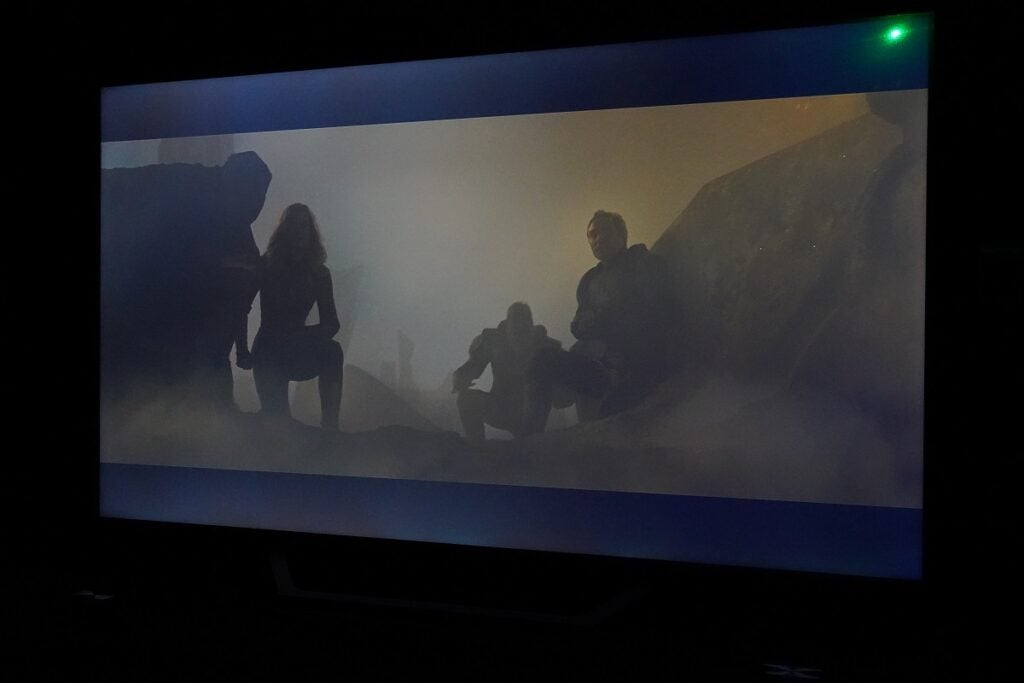
The TV is less susceptible to blooming, although with its level of brightness that’s a not surprise. It’s the lack of Full Array dimming on this model that causes problems, with backlight bleed visible across the top and bottom bars in a widescreen presentation of a film from both head on and at an angle.
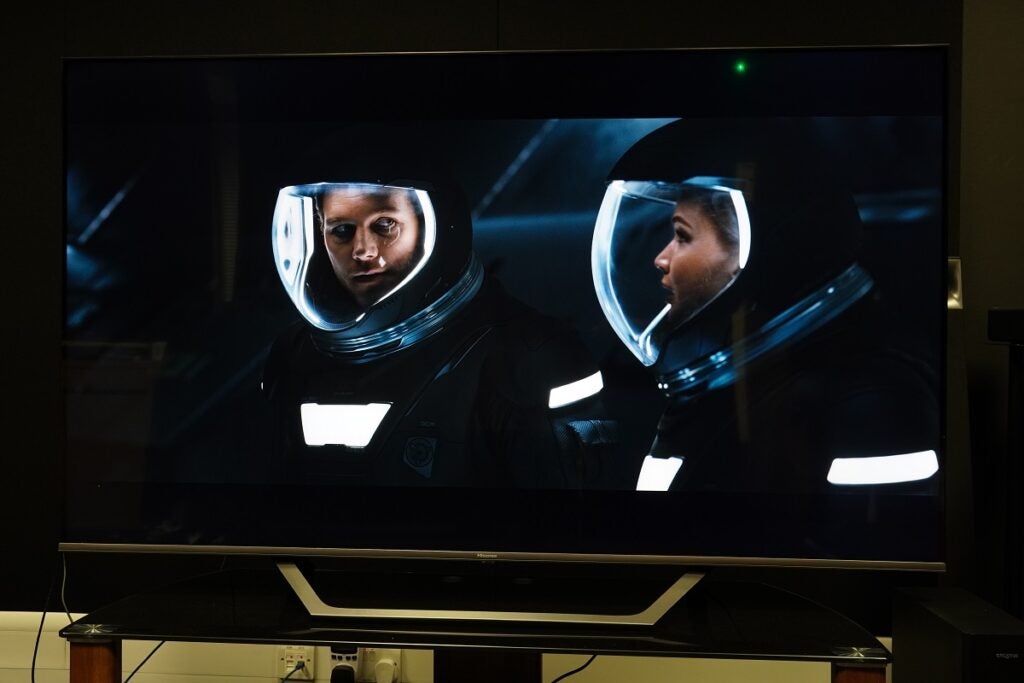
It’s not to say that black levels disappoint across every piece of HDR content I watch – the space scenes in Passengers showcase good black depth with no bleeding or blooming, but when it does pop up it’s hard to ignore. The background of the opening scrawl from Blade Runner 2049 has a blu-ish tint, and the scene where Shang Chi faces against a group of mercenaries on a bus in a tunnel brings up backlight issues. Like the previous model, the A7G is a TV to watch in a brighter film than one to dim the lights for on movie night.
With SDR content it fires on more cylinders. As is Hisense’s trademark, images are delivered with a strong sense of colour – primary colours have the look of children’s colouring book in how punchy they look. Complexions are warmly expressed (perhaps overcooked in some places) but it makes for an attention-grabbing image.
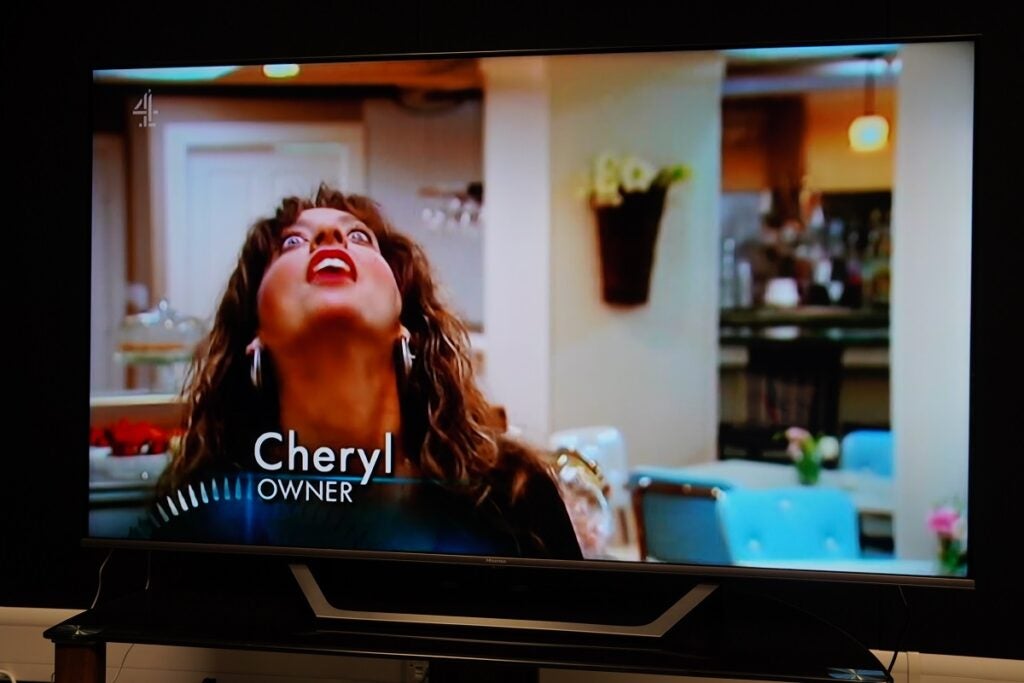
With the 40th Anniversary Blu-ray of Taxi Driver playing, the night-time scenes of Bickle driving around New York look fantastically vivid. The night sky offers great black depth and solidity, colours are richly conveyed that speaks to the lurid nightscape that Bickle drives through. It is a spectacularly attractive image to look upon.
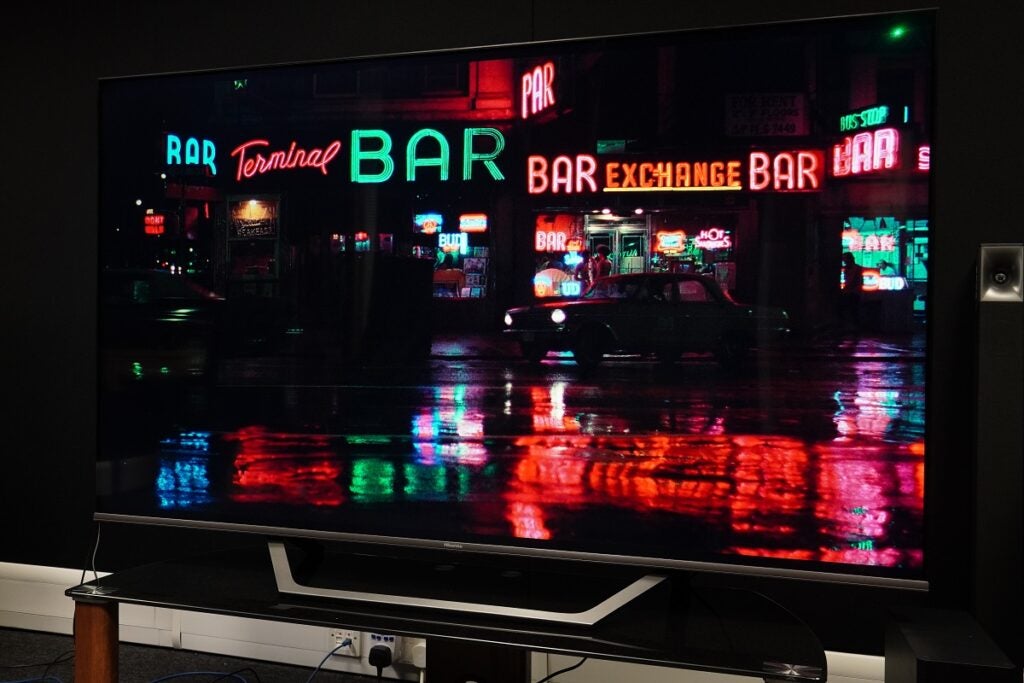
The A7G’s feel for motion is better than Hisense’s 2020 sets. While there’s an aspect of the hyper-real to the appearance of the Ultra Smooth Motion setting, it’s slick rather than distracting, coping with the slow pans of the camera in Taxi Driver without eliciting stutter and handling the faster pans well. With some more challenging content – the NASCAR races in Days of Thunder and the battle sequence towards the end of 1917 – and while there’s that slight unreality to moments, the Hisense holds onto motion with a steady hand.
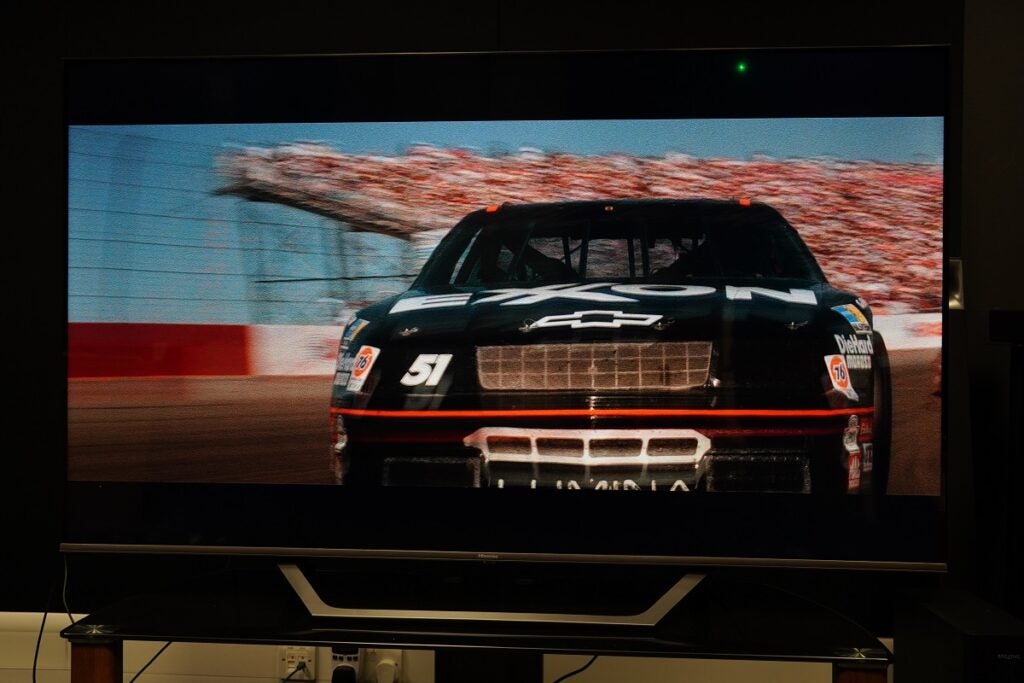
The A7G also puts in a good effort with upscaling. With SD SDR content, colour trumps precision with a predictable softness and lack of sharpness and clarity, but it is watchable. HD is better, The Martian offers solid levels of detail and clarity, though if there’s one aspect to ding the Hisense on, it’s an overall lack of sharpness.
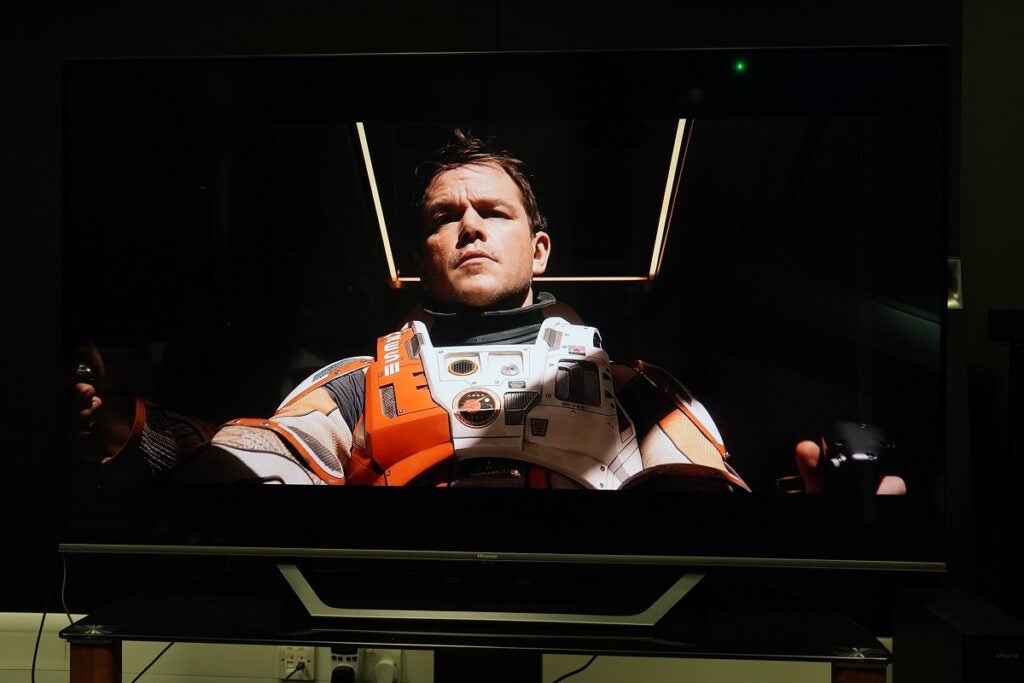
Back to 4K HDR and a native 4K presentation of Passengers and the Hisense wrings plenty of detail from that film’s set design, clothing as well as the photogenic actors on display. Close ups are filled with good levels of detail, with good edge definition brought to bear for the sci-fi trappings of the film’s production design, but what impresses most is the A7G’s colourful expression, putting the Quantum Dot panel to excellent use. When the A7G is good it looks great, but the backlight issues hamper its overall performance.
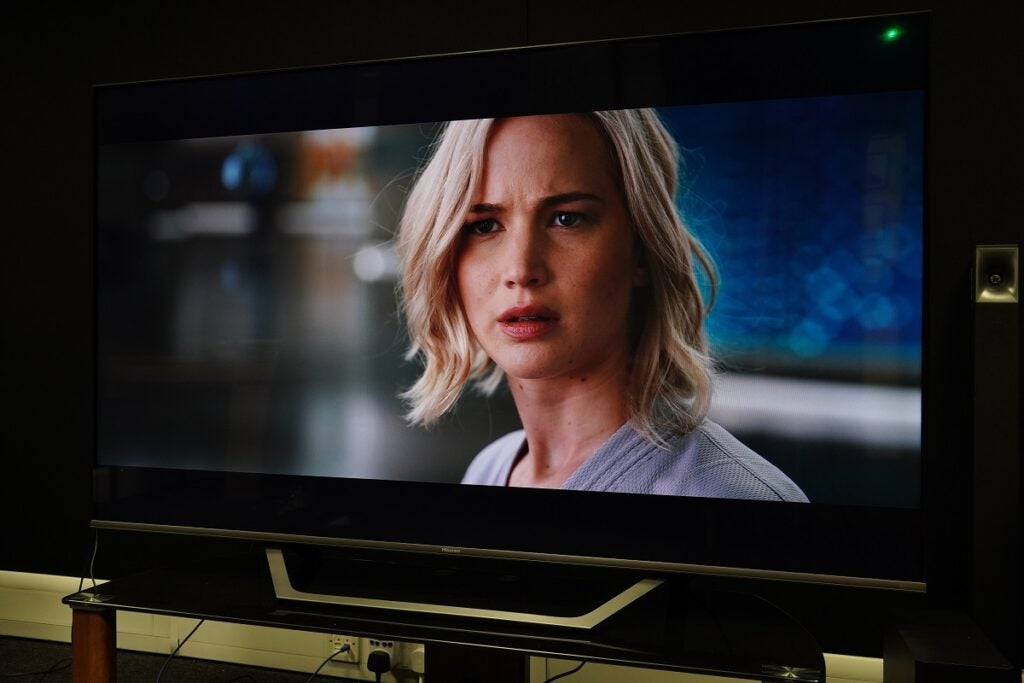
Sound quality
- Dolby Atmos processing
- Decent levels of clarity, detail and sharpness
- Not great with DTS tracks
With its 20W speaker system, the A7G offers a soundstage that’s flat and not especially dynamic. Given its size, a decent soundbar is a must, but judged on its own merits it offers solid clarity with dialogue; a presentation that’s clear, crisp and pleasingly sharp but refrains from wondering into sibilant territory.
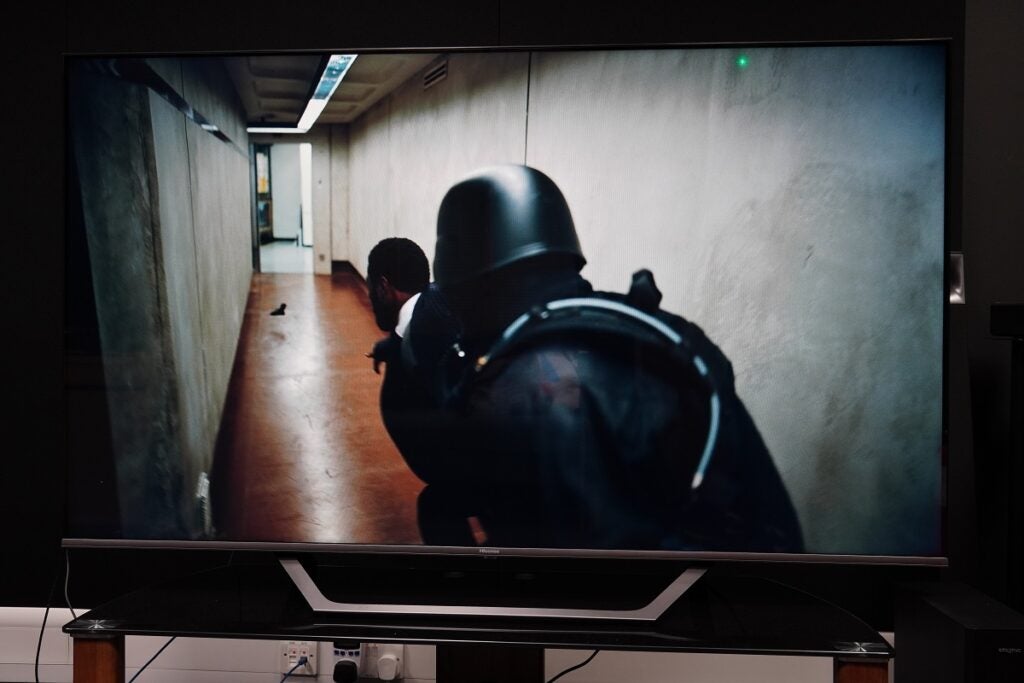
There’s an option of a few audio modes with Theatre the most expansive (and best suited to films): Speech smooths out dialogue while Sports sounds big and impactful. Dolby Atmos soundtracks fare better than DTS tracks; the whizz bang sonics and crackle of gunfire in Black Hawk Down register better than Tenet’s 5.1 DTS track, which sounds boxed in and lacks clarity, especially in the energetic action scenes.
Latest deals
Should you buy it?
You want an affordable big-screen for gaming The A7G beefs up the specs from the previous year with the addition of ALLM and VRR, and while the likes of Nvidia and AMD’s VRR solutions are not available, the low latency and new features may make the Hisense more enticing for those who can’t afford a similar size effort from LG and Samsung
You watch in dimly lit rooms The Hisense doesn’t perform well in the darker rooms, backlight bleeding becoming obvious with HDR sources. Keep the lights on and you won’t notice the A7G’s more fallible performance as much
Final Thoughts
The feature set of the A7G is improved from previous generations, with the addition of gaming features positioning the Hisense as a cheaper alternative to the likes of LG and Samsung in that area. Picture performance is typically colourful and dynamic, but backlight indiscipline means the Hisense is all that capable with certain HDR content, and there are features missing compared to its predecessor. A good effort from Hisense, but not the affordable all-rounder it could have been.
How we test
We test every televisions we review thoroughly over an extended period of time. We use industry standard tests to compare features properly. We’ll always tell you what we find. We never, ever, accept money to review a product.
Find out more about how we test in our ethics policy.
Tested for a week
Tested with real world use
Tested using demo discs and broadcast content
FAQs
No, it doesn’t support that HDR format but it can decode it.








